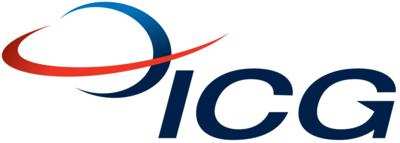On Schedule for First Deliveries in Second Quarter, 2013
ICG (International Communications Group, Inc.) has announced several “customer-inspired” modifications to the design of its revolutionary new eRouter that will not only enhance performance but make it easier for operators to perform maintenance, setup configuration, and access SIM and memory cards without having to remove the unit from the aircraft. The changes to the initial versions of the eRouter will not impact deliveries scheduled for the second quarter of 2013.

ICG’s eRouter provides airborne connectivity for Electronic Flight Bags (EFBs), passenger PCs, Smartphones and other IP devices and offers many features found in a typical corporate office networks. The eRouter is a small (12 in x 8½” in x 3¾ in) flange mount device that offers access to multiple communications networks such as Inmarsat, Swift Broadband (SBB), Ku/Ka VSAT, Iridium and other networks. Weighing less than 8 pounds the ICG eRouter is the lightest available device of its kind.
In addition to Satcom connectivity, the eRouter offers 4G GSM (global system for mobile) cellular service that can be used for data and file transfers when the aircraft is on the ground. The eRouter manages connectivity for all cabin crew, flight deck and aircraft system data communication requirements.
“Our new eRouter was inspired by customer demand and we continued to seek their input as we finalized its design. Customers initially indicated that they were not only looking for product functionality for their on-board data routing requirements in a single lightweight box, but also ease of access for configuration or maintenance and scalability for future requirements,” said Brad Smith, Executive Vice President of ICG. “We’ve also designed the eRouter to be compatible with most major Satcom service providers, making it the most flexible and scalable aeronautical routing technology available today.”
Utilizing satellite or GSM connectivity for Internet and Intranet access, ICG’s new eRouter can be configured as a Wireless Access Point (AP) for providing Wi-Fi client devices use of available satellite or GSM based internet services as well as aircraft local area network access. Alternatively, it can be configured as a client to connect to ground based wireless networks while on the tarmac. ICG’s eRouter also utilizes dual Wi-Fi antenna technology to eliminate signal fading and dead spots. Users will be able to communicate with multiple Local Area Networks (LANs) or Wide Area Network (WAN) clients, allowing the aircraft to be included in the office-based network and users to have peer-to-peer access to each other whenever service is available.
The ICG eRouter features three easily accessible SIM Card access ports in the front of the device, allowing the aircraft to be operated in multiple geographic regions without having to swap out SIM cards. Its Graphical User Interface (GUI) allows customers to name each SIM card based on when and where they should be utilized. As a result, operators can seamlessly transition from the US to European or other global locations without having to load new software or reconfigure SIM cards. Secure Digital (SD) cards with stored system configuration data can also be readily exchanged, allowing the information to be transferred from one unit to another in the event of a line swap or system upgrade.
The eRouter’s modular architecture provides easy expandability and reduces product costs by offering an operator only those services they might currently require. It is designed with upgrades and future and emerging requirements in mind.
As a testament to its scalable and flexible design, the device will initially be available in three different versions depending on customer requirements in a single box solution. A baseline product called the ERT-100 will perform data routing functions, the ERT-120 provides enhanced data routing functions such as acceleration and compression while the ERT-140 provides telephony features such as VoIP, analog and PBX functionality. ICG has also embarked on the development of two additional versions of the eRouter, the ERT-160 which will incorporate aircraft health monitoring capabilities while the ERT-180 includes all of the above features to include telephony and health monitoring into a single unit design which will be available in the first quarter of 2014.
“ICG’s eRouter features multi-tiered PCB board technology that combines several competitors systems and applications into one box. It not only serves as a solution for new installations but also as a replacement for systems that are now obsolete or reaching the end of production life,” Smith concluded.
 ANN's Daily Aero-Linx (12.03.25)
ANN's Daily Aero-Linx (12.03.25) ANN's Daily Aero-Term (12.03.25): CrewMember (UAS)
ANN's Daily Aero-Term (12.03.25): CrewMember (UAS) NTSB Prelim: Maule M-7-235A
NTSB Prelim: Maule M-7-235A Airborne-Flight Training 12.04.25: Ldg Fee Danger, Av Mental Health, PC-7 MKX
Airborne-Flight Training 12.04.25: Ldg Fee Danger, Av Mental Health, PC-7 MKX Aero-News: Quote of the Day (12.04.25)
Aero-News: Quote of the Day (12.04.25)



